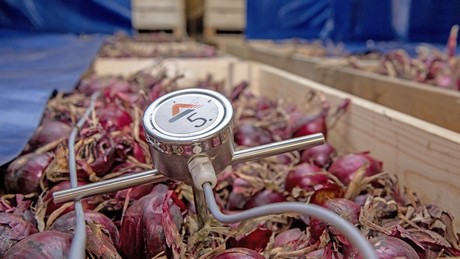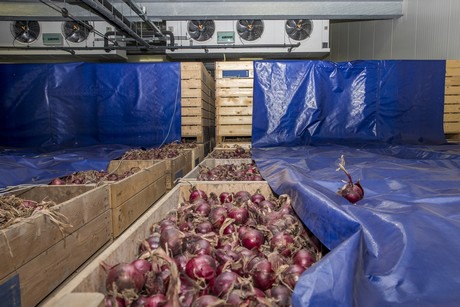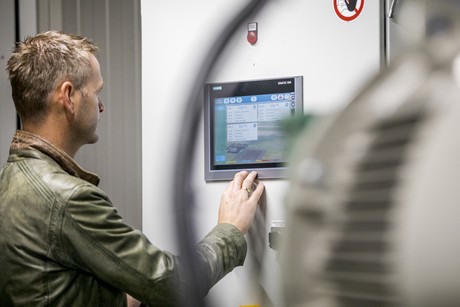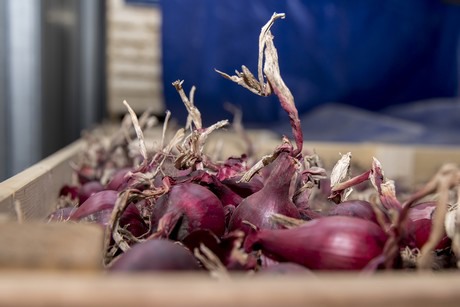Although ENGIE Refrigeration doesn’t exactly have a past in the onion sector, the company does have years of experience in cooling techniques. Some years ago, the company introduced a condensation drying technique to the onion sector, and according to Marcel Bennink that was a bull’s-eye. “We gained this technique in part thanks to our experience in cheese warehouses. At first, the agrarian sector had to get used to this new technique a bit, but it has now proven its added value. The onions coming from our storage are the best advertisement. The system might not be like a hospital, because bad onions can’t be improved, after all, but we’re almost like a nursing home.”

“The condensation dryer, also called refrigeration dryer, is actually both a cold and heat installation in one that makes outdoor air and gas heaters redundant. The installation withdraws moisture from the air by means of condensation, and transports this outside using an outlet pipe. Because of that, the onions are drying from the very first minute. No matter the condition the onions arrive in, they’ll be rustling a day after the harvest. The process of drying is twice as fast as in the past, because drying is guaranteed to continue 24 hours per day. The stem is dry within a few days. The room’s stable temperature ensures the onions remain at the correct temperature.This means quality of the onions is maintained as well,” Marcel explains.

“As the system is equipped with a heat pump, growers and processors can also use it to heat up batches of onions to combat diseases. In that case, the heat pump uses either the outdoor air or the heat released during the cooling process (the drying process) to heat up the onions or to keep them at the right temperature. Because the system isn’t dependent on outdoor air, no heat is lost during the heating process either. The drying of the onions continues throughout the heating process. Just a fraction of the electricity is needed for that, and this can be generated using solar panels,” Marcel says.

The first project ENGIE realised in onions was a project for the organic Custers farm. “It went well there from day one. That gained us a lot of trust on the market. There’s a lot of interest particularly from the organic corner, because those onions are more sensitive to moulds and bacteria. Low temperatures and stable conditions during storage are a requisite for products of good quality. But we’ll also install our condensation drying technique in MSP Onions’ new processing factory. Last year’s harvest affected investment willingness greatly. Hardly anyone in Zeeland wants to invest now, but interest is considerable in regions where people managed to irrigate,” Marcel explains.

“Costs of the additional charge of this installation compared to a conventional system can be recovered in three years at most. However, when maintenance is done regularly and carefully, this new storage technique can last 20 to 25 years. The natural coolant in the installation ensures the highest return and the lowest energy usage, so that customers also qualify for EIA, the Dutch Energy Investment Deduction. Saving energy is saving costs. Besides, for some buyers, producing sustainably is even a requirements for suppliers,” Marcel says. “By eliminating outdoor air, companies can accurately direct for the ideal drying and storing conditions without using gas and with fewer CO2 emissions. Because of this, drying can occur twice as fast, onions can be kept at quality, and 80% of energy can be saved every year. It’s money for jam!”

